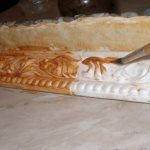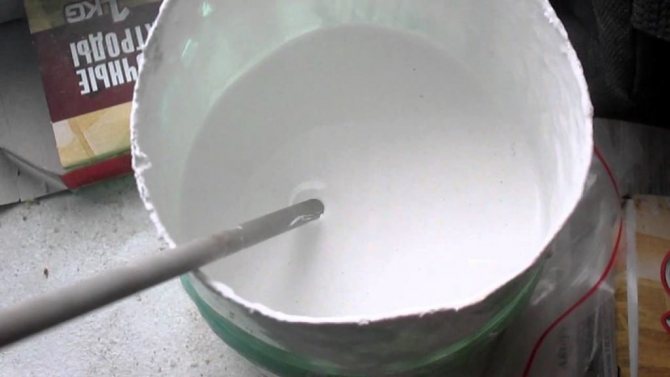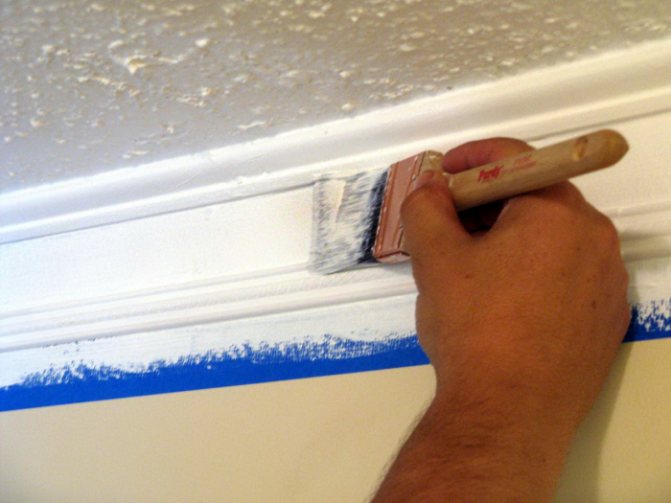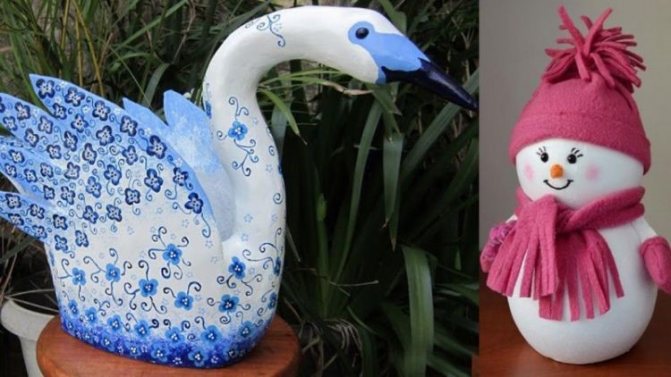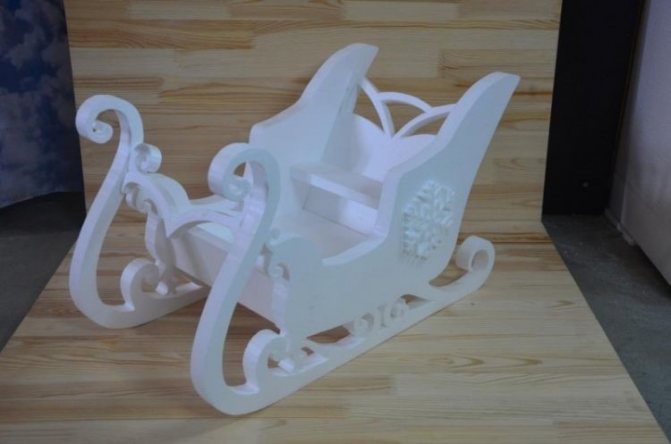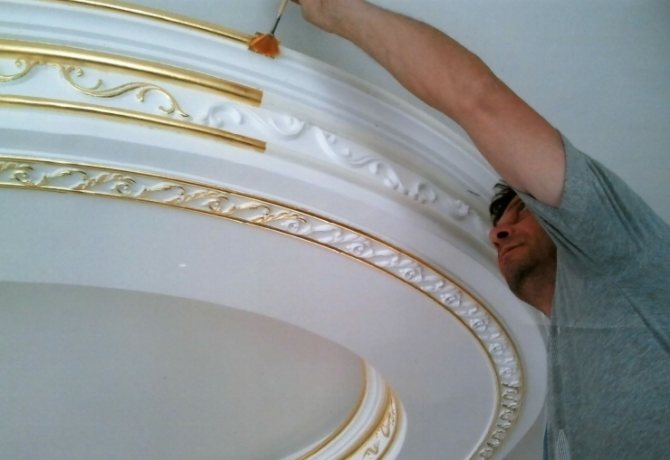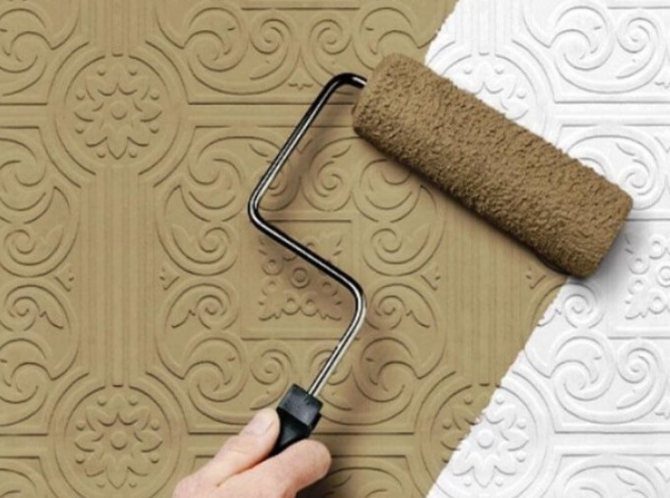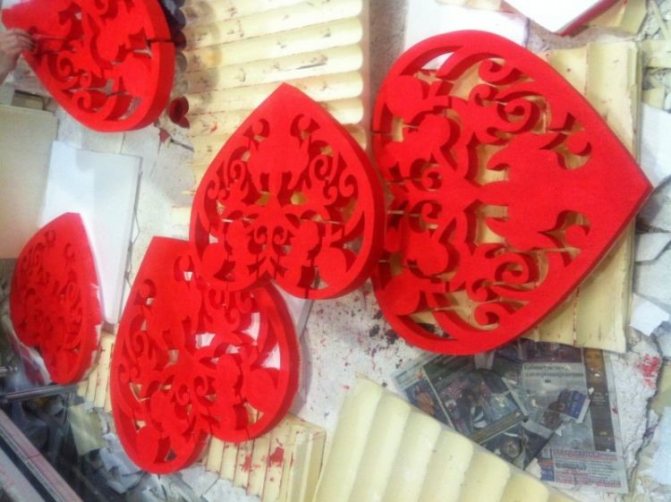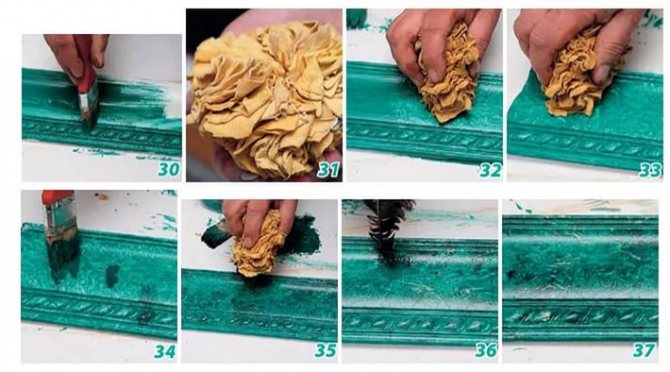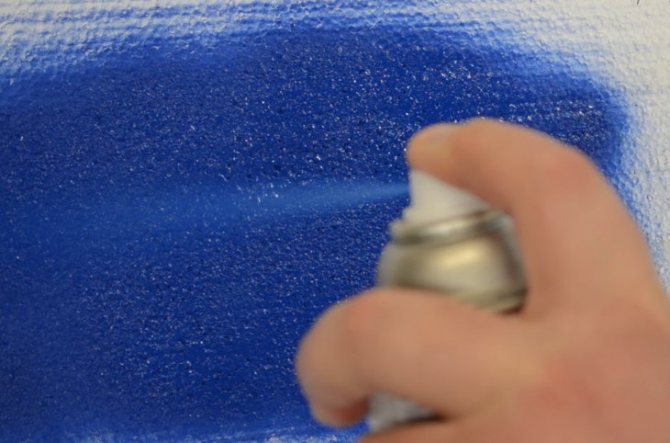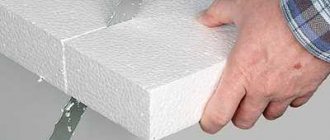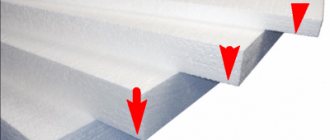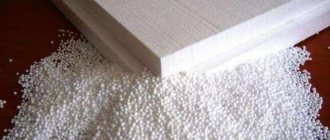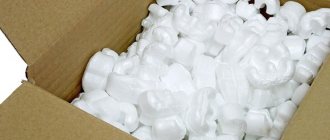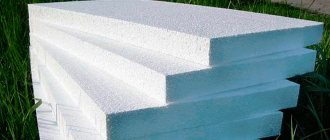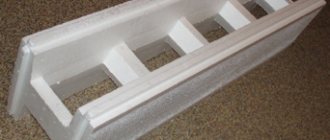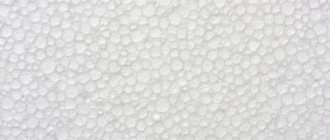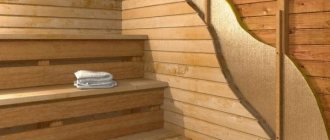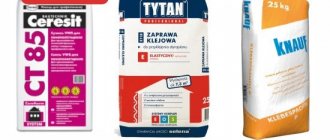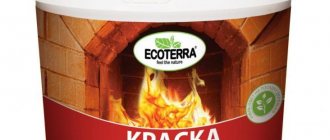A white baguette is a popular option. But before you paint the polystyrene skirting board, you need to mask minor flaws and installation errors.
The reasons why you have to update the skirting board with paint:
- Imitation of stucco molding. Paint can be used to decorate cornices like natural stone or make a stylization like wood.
- Hiding the joints of baguettes.
- Return to original whiteness.
- The painted cornice can be easily cleaned with a damp sponge.
- The coating will add strength to the loose structure of the building material.
Why do you need staining
When performing external finishing, coloring the foam is performed less often than with internal. When staining, there are two main tasks:
- protect the material;
- improve visual properties.
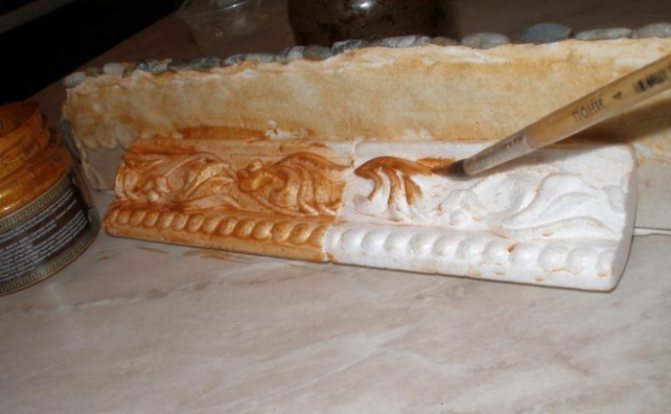
Polyfoam does not tolerate exposure to ultraviolet rays. From constant exposure to the sun, it turns yellow and becomes fragile, losing its properties. Protection may also be required against other types of non-mechanical stress. Coloring is also done to improve the visual properties. This is especially true of those moments when the ceiling plinth or improvised column is made of foam. To better combine the finishing material with the general exterior, the staining method is used.
Choosing how to paint polystyrene foam: painting features
Plinth or molding inside the building is painted with water-based paint. It is best to give preference to familiar brands when choosing a mixture. So often Tikurill paint is used for these purposes.
Features of painting expanded polystyrene:
- First you need to prepare the surface by cleaning it from dust and dirt with a dry cloth.
- For painting, use a brush and move in one direction. This will get rid of divorces.
- For a rich color, the paint is applied in several layers. But you need to wait for each layer to dry completely.
- When painting a relief surface, a spray gun is used. Spraying will help to achieve uniform application of the composition.
For exterior painting, acrylic paint is used. But at the same time, a protective layer against chemical attack is first applied to the foam. It is enough just to cover the expanded polystyrene with a putty.
Liquid glass is often used for protective purposes.
Liquid glass is diluted with a primer until uniform. It is important that no droplets are observed in the solution. Then they simply apply the composition to the foam, wait for drying and paint. But usually the outer lining is done with plaster.
Which composition to choose
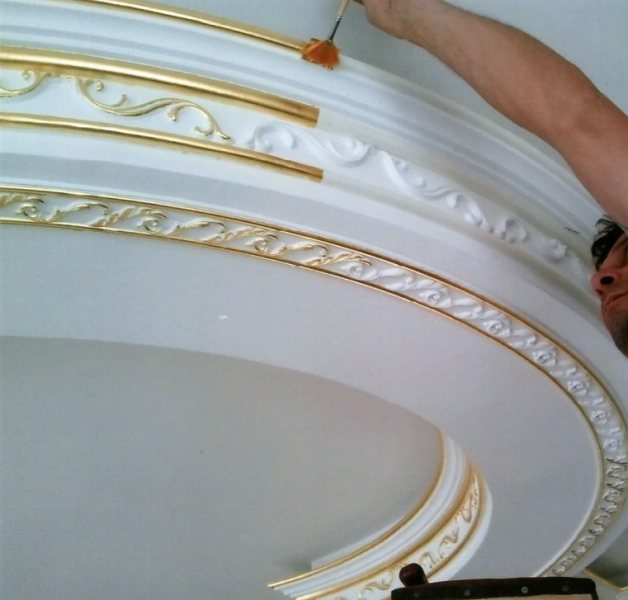

Polyfoam does not tolerate well not only the effects of ultraviolet radiation, but also of certain kinds of substances, for example, this applies to organic solvents. That is why the coloring composition that will be applied to the foam must meet certain requirements. One of them is the absence in the composition of ethicelate, toluene, acetylenes and ethers, which are organic solvents. They corrode the surface of the foam at high speed, rendering it unusable. This means that alkyd paints are not suitable as a colorant.
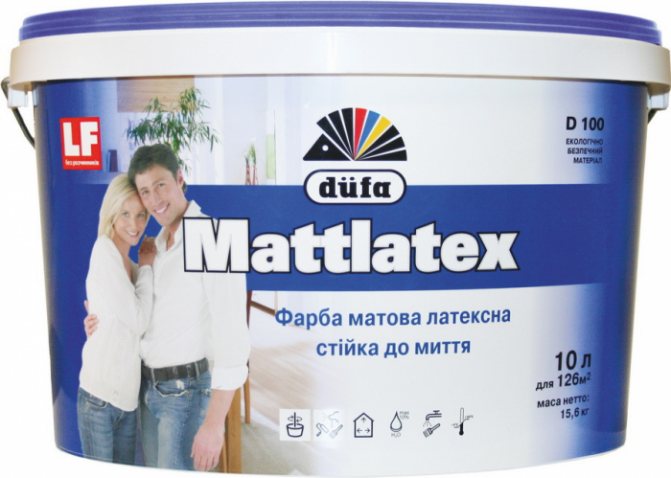

The composition that will be applied to the insulation must have a certain elasticity. This is due to the fact that the foam itself has good elasticity and can deform due to mechanical stress and restore its shape. If the composition is too hard, then cracks will appear on the surface. The paint must have good adhesion. The foam surface can hardly be called perfectly smooth, but the granules can create certain problems with hiding power. It is good if the composition is resistant to moisture and atmospheric influences.In this case, it will be possible to carry out wet cleaning of the finish.
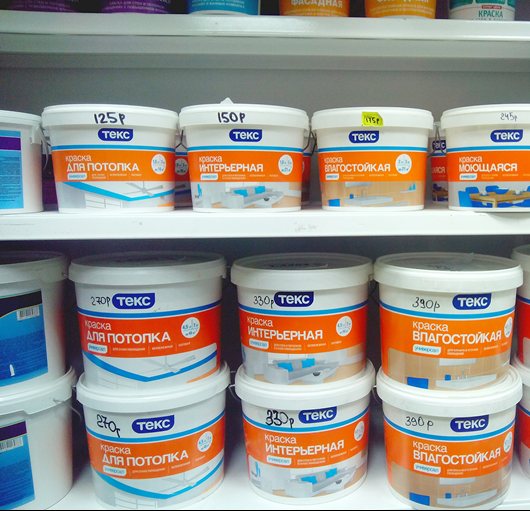

The composition must be resistant to ultraviolet light, as well as to temperature changes, since the paint can be applied both outside and inside the room, for example, in the kitchen, where conditions are constantly changing. The substance must have sufficient density to cover the insulation with an even layer. It is good if, after drying, the surface is resistant to abrasion and mechanical stress. Among all the compositions that are available on the market, the requirements meet:
- water-based;
- acrylic.
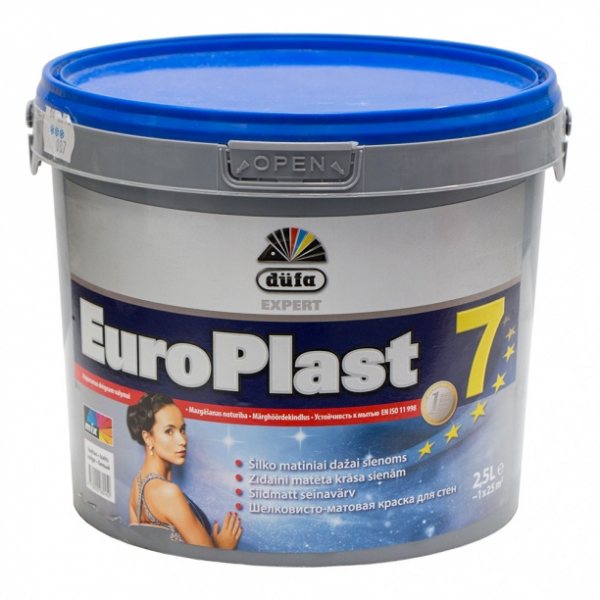

The first version of the compositions is quite simple to apply and does not require special tools. In addition, the paint is diluted with water, which means it is environmentally friendly. The surface remains vapor permeable after application. When choosing water-based compositions, you should pay attention to the facade option, since they are more resistant to mechanical stress and moisture. A certain amount of wet cleaning is allowed, which will not affect the color. Acrylic compounds are more resistant to various influences, but their service life is lower. In addition, the cost of such finishing is much higher than the previous option.
Styrofoam paint
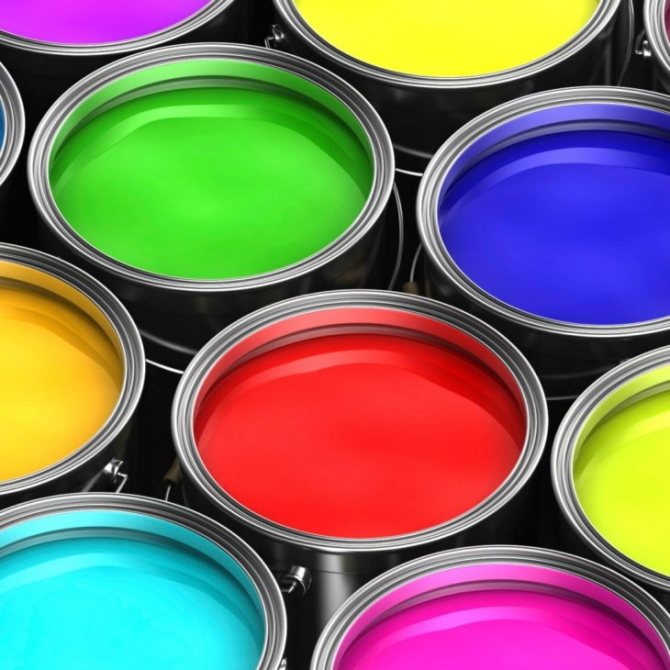

Styrofoam paint
Since the well-known foam is initially produced in white, its painting is not something special or supernatural. Each of us has seen more than once the facades, finished with elements of foam or interior interiors with painted decorative details made of expanded polystyrene. Expanded polystyrene can be given any color you need, but for this you need to know what coloring composition is allowed to paint.
Important! Styrofoam painting is possible with certain paints, but foam laminated tiles are not painted at all.
To choose a paint, you need to be sure that expanded polystyrene has the following properties:
- To begin with, the material must have high levels of water resistance.
- Have sufficient density
- They are not afraid of chemical influences and negative environmental influences
A good option for painting the material can be called water-based and acrylic mixtures. Let's look at the advantages and disadvantages of using these paints using a small table as an example:
| Water-based paint | Acrylic | ||
| pros | Minuses | pros | Minuses |
| Odorless | The very word water-based means that the mixture is not able to withstand water, moreover, it quickly gets dirty | Resistant to water, dust and temperature extremes | Fragility |
| Good vapor permeability | Easy application and fast drying | High price | |
| The material is very easy to work with | No smell and wide color palette | ||
| Due to its low cost, it is available for everyone | High elasticity | ||
Painting Tips
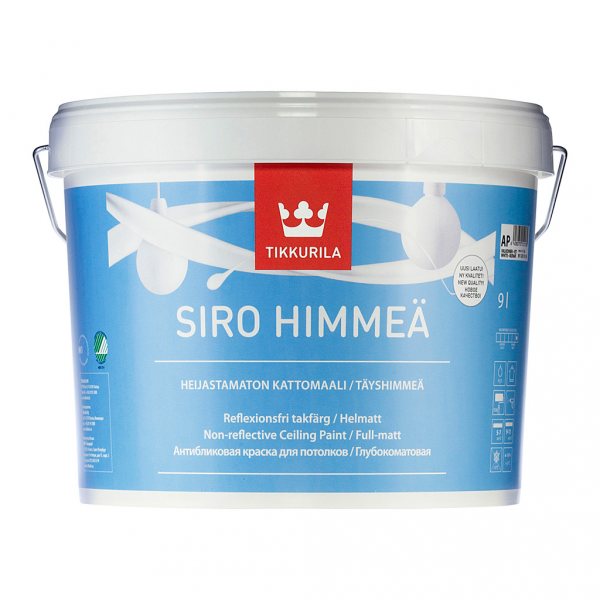

For painting products made of polystyrene that will be inside the premises, compositions from the manufacturers Dufa, Caparol, Sniezka, Tikkurila are perfect. To completely cover the surface, you will need to apply several layers of paint to the foam. In this case, you can use both a regular brush and a spray gun. The second is especially relevant if the coating is applied before installation. The surface quality will be significantly higher than with manual painting. If you want to create unique patterns on the foam surface, you can use various types of gouache. For applying patterns on large areas, it is convenient to use ready-made stencils.
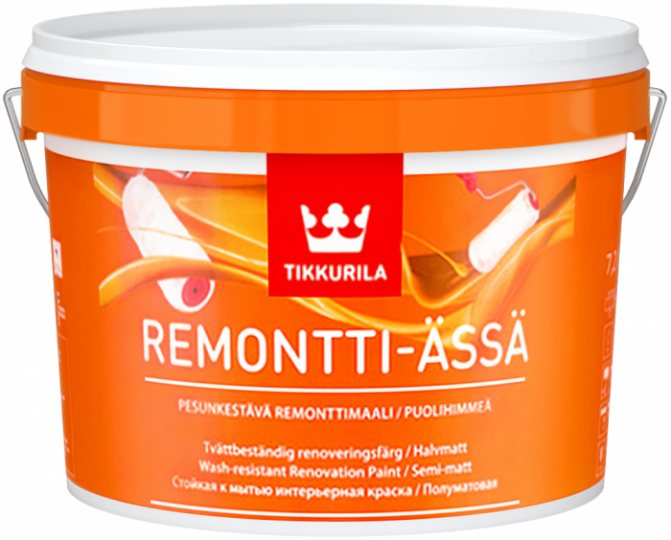

In order for the gouache to set well, it is necessary to first apply a layer of water-based paint on the element, which will act as a primer. In this case, between the application of different layers, it is required to wait until they are completely dry in order to prevent mixing and damage to the pattern.If you want to give the foam more protective functions, you can use silicone paints. They are especially relevant for kitchens and bathrooms where the surface is constantly exposed to moisture.
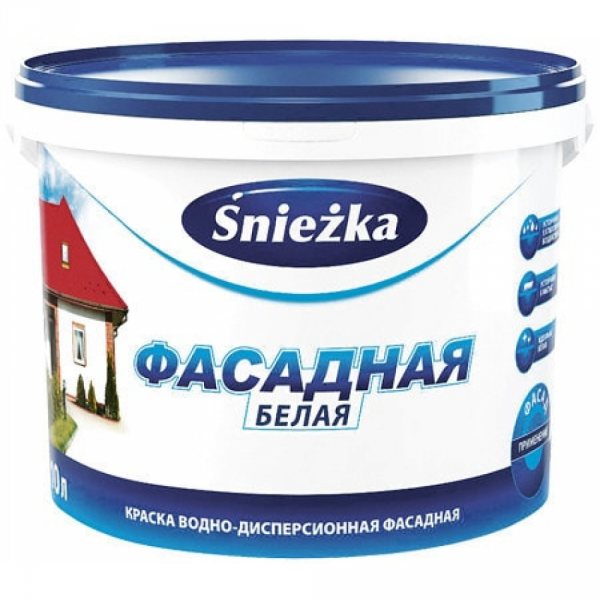

For finishing the foam outside, paints from the same manufacturers are used. In this case, it is necessary to choose exactly the front options. At the same time, just water-based options will not work, you will need silicone or acrylic paints, which are able to form a reliable layer on the surface of the product that protects against ultraviolet radiation and precipitation, which contain various chemicals. Before painting, you will need to properly seal the seams with a suitable compound, since the paint is not able to strengthen them. For more painting tips, see the video below.
We draw on styrofoam. Master Class
Elena Shvetsova
We draw on styrofoam. Master Class
Draw on Styrofoam. Master Class.
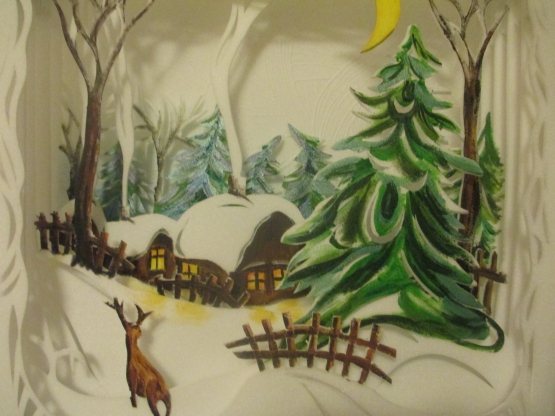

Dear colleagues!
The New Year's holiday is approaching swiftly and relentlessly. And, like every year, creative people have so much trouble in decorating their home, groups and music halls of the preschool educational institution. We glue, we cut, draw, sometimes we cut out from the most unexpected materials that have nothing to do with creativity.
I want to express my deep gratitude to Zalifa Bikuzhina for her Master Class about the use of ceiling tiles. He gave me such a powerful impetus to creativity, and I hasten to share it with you.
First, I needed to give advice to educators on the manufacture of tunnels from ceiling tiles, which it was decided to put in a continuous row in the windows of the groups.
We started with a simple plot with snowdrifts and Christmas trees, then animals, angels, churches, houses, snowmen were added.
elk that the background of the window panes looks great with the boiling white foam, but with flashlights - just fabulous!


And when the creative process was in full swing, I wanted to add volumetric figures to the tunnel, made an angel and a snowman.
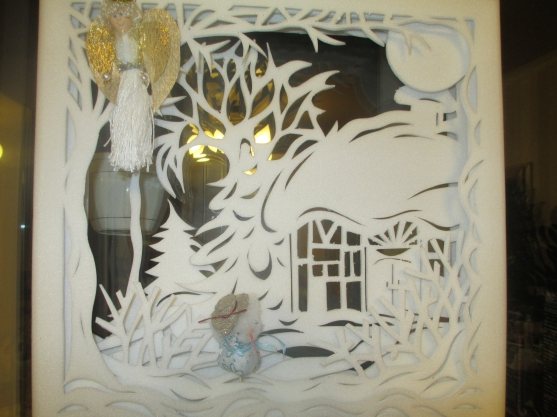

Then I wanted to add a little paint, and it appeared on the domes of the church.


Then on Christmas trees and tree trunks.
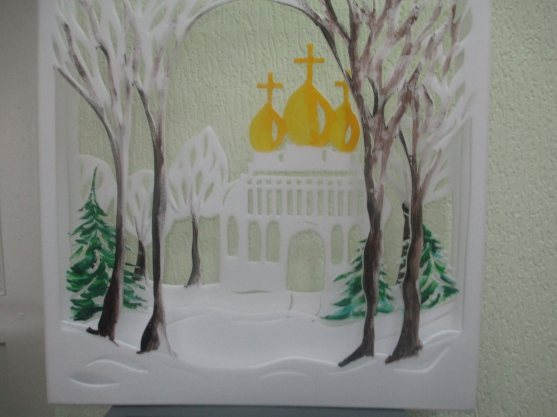

Well, then I couldn't stop.
The fact is that I have grandmother's embroideries at home, there are a lot of them, all handmade, I remember everything from my earliest childhood. But there is one, the most beloved, with a winter landscape and a deer that came to the edge of the village on a particularly cold and hungry night. Her grandmother was embroidering in 1922!
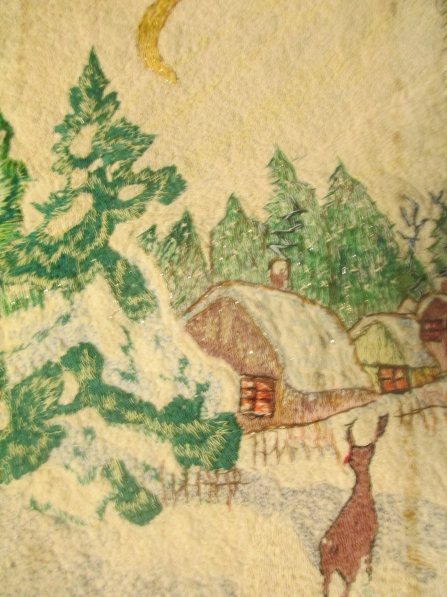

I myself love to embroider, but I can't imagine how much work and patience my grandmother needed to embroider this picture in one thread of a floss.
I really wanted to transfer this plot to Styrofoamto have many layers, 5 or 6.
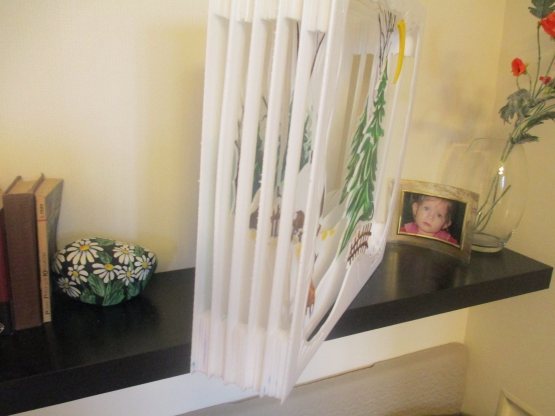

And that's what came of it!
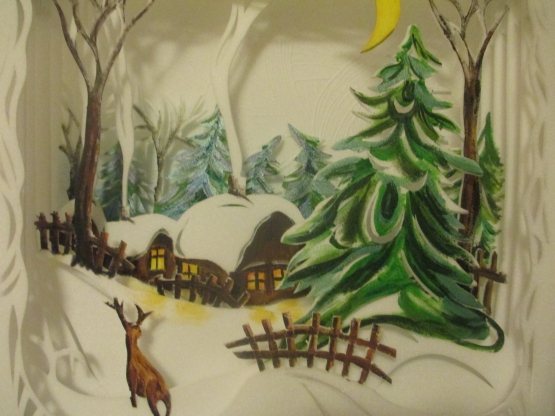

It remains now to figure out how to close the sides to frame the work.
When I finished this work, thoughts and desires were already swarming in my head to do more and more. But there is not much time before the New Year, I put off my creative impulses until the New Year holidays, I collect reproductions and photographs, based on which it will be easier for me to draw up a sketch.
By the way, I did not make any patterns for the picture, but cut Styrofoam, starting from the first, front sheet, and all subsequent ones - by superimposing the already cut. I used acrylic paints, since gouache paints do not fit well on Styrofoam, are rolling down, already tested.
Happy New Year to everyone! Health to all of you and your families! I wish you creative success and enjoy your work!
Output
Now you know what foam paint is and how to apply it correctly. Additionally, watch the video in this article. If you do not understand any points, ask questions in the comments, and I will be happy to answer you.
Recently, it has become relevant to insulate buildings with foam, this material is easy to use, has a low cost and practicality, provided it is processed correctly. In order to increase the strength of the material and increase its service life, several options are used, including painting the foam.
Expanded polystyrene is plastic and lightweight. It is often used for insulating buildings, as well as for decoration. The material is initially made in white, however, the plates are easy to paint, the main thing is to choose the right dye.
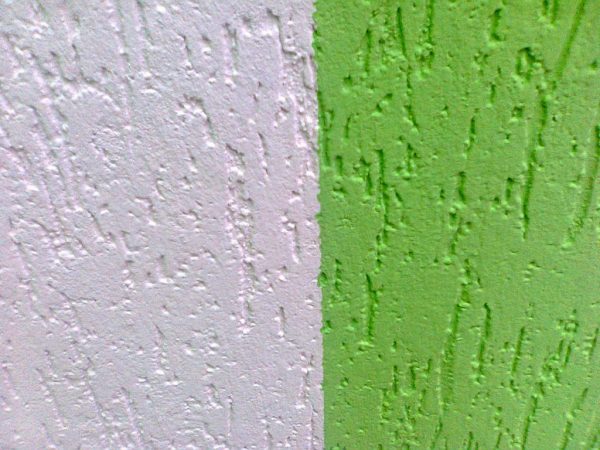

Styrofoam painting

